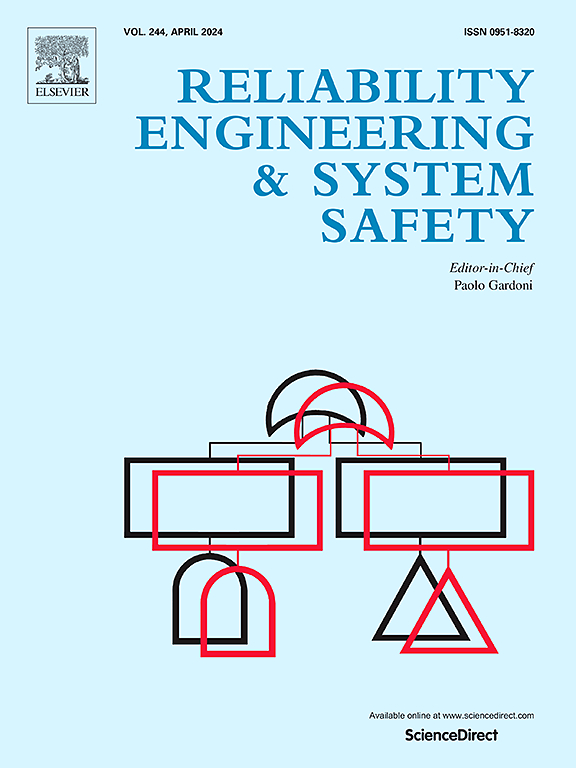Safety risk assessment for connected and automated vehicles: Integrating FTA and CM-improved AHP
IF 9.4
1区 工程技术
Q1 ENGINEERING, INDUSTRIAL
引用次数: 0
Abstract
To reduce safety accidents from functional failures in connected and automated vehicles (CAVs), risk assessment and prevention are essential. However, traditional hazard analysis and risk assessment (HARA) methods suffer from limitations: insufficient quantitative assessment and inadequate consideration of ambiguity and uncertainty. To this end, we propose a quantitative risk assessment method for CAVs based on fault tree analysis (FTA) and cloud model (CM)-improved analytic hierarchy process (AHP). First, we use the golden section method and CM to refine the automotive safety integrity level (ASIL), representing ambiguity in level boundaries. Next, we incorporate potential functional failure paths and construct basic events for the FTA based on the failure modes of vehicle components. Meanwhile, the CM-improved AHP is applied to assess risks for each basic event, reducing uncertainty from subjective data. Finally, we combine the technique for order preference by similarity to an ideal solution (TOPSIS) with the conversion function to provide quantitative probabilities for the top event and perform a sensitivity analysis of basic events. A case study on a real open-source test vehicle shows that the proposed method quantifies the probability of automatic emergency braking (AEB) system failure and ranks the risk for each basic event. Compared to existing methods, it has significant advantages in the comprehensiveness and objectivity of risk assessment, providing more accurate information for risk prevention.
求助全文
约1分钟内获得全文
求助全文
来源期刊

Reliability Engineering & System Safety
管理科学-工程:工业
CiteScore
15.20
自引率
39.50%
发文量
621
审稿时长
67 days
期刊介绍:
Elsevier publishes Reliability Engineering & System Safety in association with the European Safety and Reliability Association and the Safety Engineering and Risk Analysis Division. The international journal is devoted to developing and applying methods to enhance the safety and reliability of complex technological systems, like nuclear power plants, chemical plants, hazardous waste facilities, space systems, offshore and maritime systems, transportation systems, constructed infrastructure, and manufacturing plants. The journal normally publishes only articles that involve the analysis of substantive problems related to the reliability of complex systems or present techniques and/or theoretical results that have a discernable relationship to the solution of such problems. An important aim is to balance academic material and practical applications.
 求助内容:
求助内容: 应助结果提醒方式:
应助结果提醒方式:


